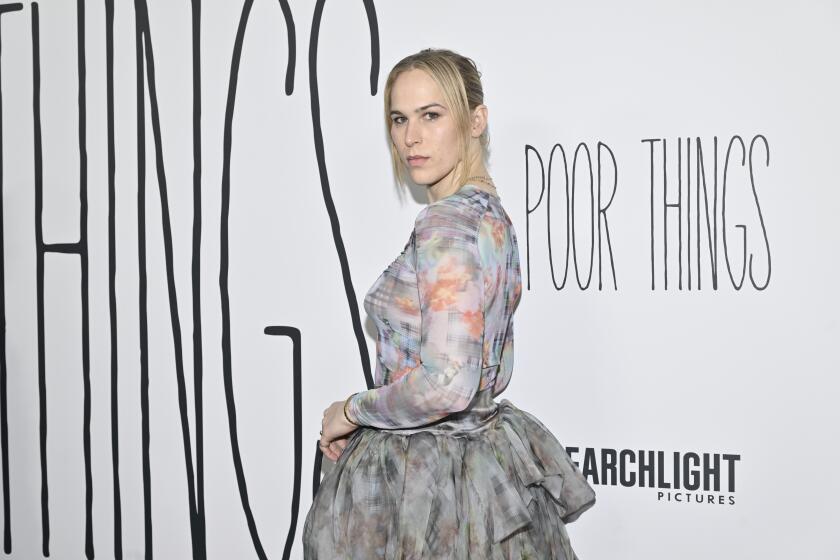Danny Lyon Photo Retrospective Dives Right Into the Rougher Edges of American Life
Photography had somehow driven Danny Lyon to this, putting him on the back of a Triumph motorcycle in the mid-1960s, without a helmet and grappling with a camera at 100 m.p.h. across the Chicago Skyway, high above the city’s South Side.
Reckless craziness brought him there, Lyon has since decided, even if it’s just as he heard photographer Robert Frank say years later, as they shared a taxi: “You really have to be a fanatic to be a photographer.”
Lyon’s own obsession with the rougher edges of American society delivered him at 21 to the Southern civil-rights movement in 1962, when, as staff photographer for the Student Nonviolent Coordinating Committee, he began his career by capturing scenes of official cruelty against blacks. Later that same decade, Lyon spent 14 months visiting Texas prisons, documenting a manor-like system in which uniformed prisoners were treated as virtual servants to penitentiary officials and guards.
The common link among these and other projects has been the way Lyon dove into his subject matter, submerging himself in the life and people of a subculture. His series “The Bikeriders” perhaps best epitomized this, offering a portrait of rugged leather and denim, greased hair and iron crosses captured on film while he rode for three years as a member of the Chicago Outlaws.
“It was total madness,” said Lyon, 49, who bears a few tattoos from those grease-smeared days. “I mean, I rode a bike recently with a friend of mine, and it was scary . It’s the difference that 20 years and four children does to anybody.”
He had originally sought contact with the motorcycle gang as a documentarian searching for a compelling subject. During that period, Lyon felt a kinship with the New Journalists of the 1960s, when such writers as Tom Wolfe, Gay Talese and Hunter S. Thompson were probing beyond the bloodless facts of contemporary newspapers and looking deeply at their own culture.
For Lyon, it was “probably the most productive period of my life as a photographer,” he said last week. And it is this work that is central to a new exhibit of his pictures at the Jan Kesner Gallery through July 27. The collection of 52 prints, his first solo show in Los Angeles in more than a decade, also includes his 1987-88 series on demolition derbies, “The Pits.”
“I love the rawness to the work, the confrontational aspect,” said Kesner, surveying the newly hung pictures just before the show’s opening last weekend. “And they’re beautiful.”
The exhibit’s earliest images are culled from “The Movement: Documentary of a Struggle for Equality,” including an informal and uninvited 1963 portrait of a quartet of Mississippi police talking lazily with a pair of locals. In the picture, the uniformed and presumably on-duty police have spotted Lyon and his camera. One offers a middle finger, while another turns completely around to grab his crotch as a cigar hangs limply from his mouth.
In another photograph, a pair of black civil-rights protesters are arrested by police for carrying signs urging others to register to vote “for equality now!”
“For many years I regarded that as a very early stage of my life and that I wasn’t a very sophisticated photographer then,” Lyon said. “So I tended not to care for the work that much.
“Now, almost 30 years have gone by, and it is truly historic work. The people in those photographs are very important people, and there are not that many pictures of them.”
Lyon was speaking by phone from his studio, a converted three-story barn on a former dairy farm in New York’s Hudson Valley. He lives in a certain isolation there with his family, gardening and raising animals between working on his pictures and films. For the moment, he was taking a break from editing a scene from his first film project since the mid-1980s, something he called “a sort of documentary on America.”
Thus far, the film has traveled some grim and often familiar territories for Lyon, incorporating scenes from the Mississippi Delta, a demolition derby, a tattoo contest, a double homicide in Brooklyn and among the homeless of New York.
“I’m using the same talent,” he said, comparing his work in both media. “I love to look at things. One of my favorite things is just to sit down at the curb and watch something. People are always yelling at me in buses because I’m looking at a girl or doing something wrong. People don’t like you to do that.”
These last three years have also had Lyon experimenting with collages, a direction that photographers like Frank have taken in their later years. Partially inspired by some of painter David Hockney’s photo-collage work, Lyon hopes his more recent artwork will result in another Los Angeles exhibit next year. This work is already part of a larger retrospective of his career curated by the Folkwang Museum in Essen, Germany, which is to begin its tour Aug. 25 at the Center for Creative Photography in Tucson, Ariz., before leaving for Europe in January.
Lyon has gone in this direction with some of his still work, he said, even as he realizes that many of the photojournalists he knew in the ‘60s, with their mud-covered boots and frayed khakis, would have looked disparagingly on such esoteric wanderings.
“You’ve got to respect guys like that, they really are taking pictures with bullets flying around them,” Lyon said. “On the other hand, photography is an art. I think there is no question the great photographers have been great artists.”
More to Read
The biggest entertainment stories
Get our big stories about Hollywood, film, television, music, arts, culture and more right in your inbox as soon as they publish.
You may occasionally receive promotional content from the Los Angeles Times.







